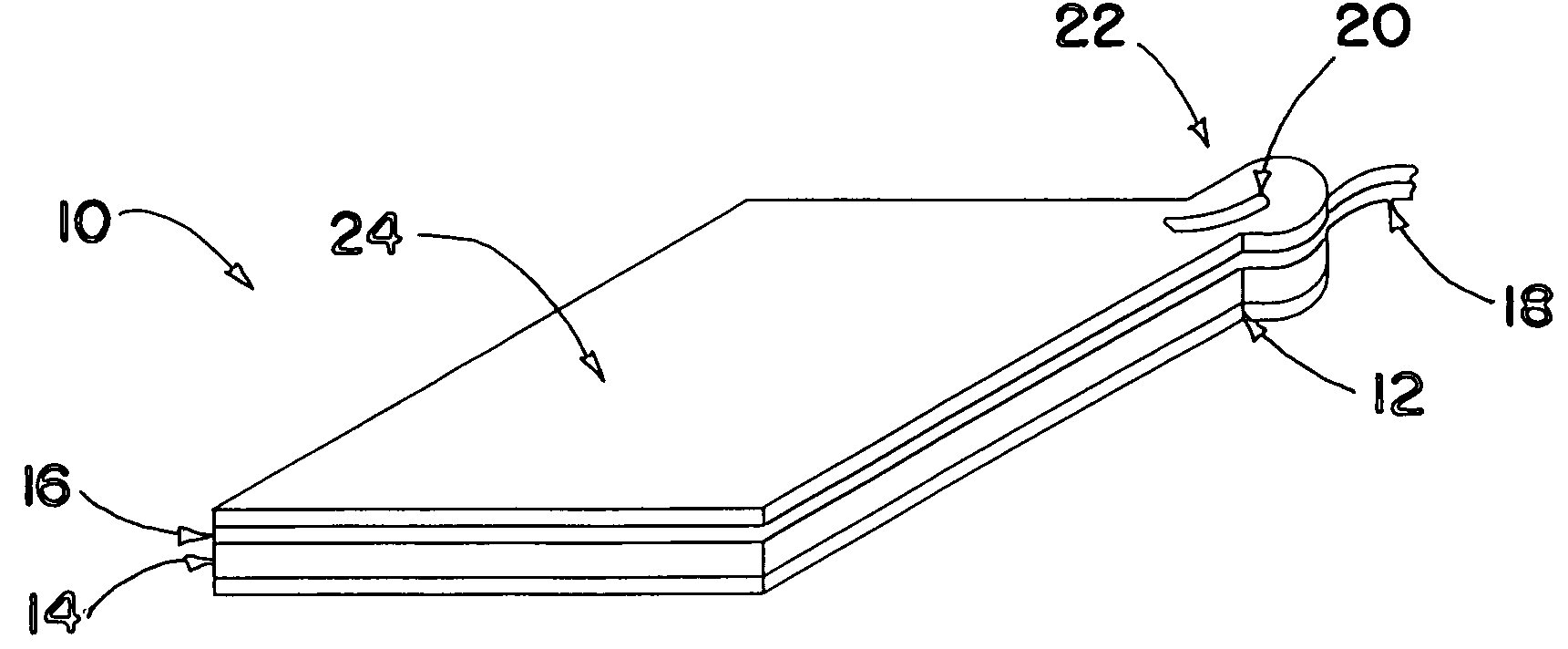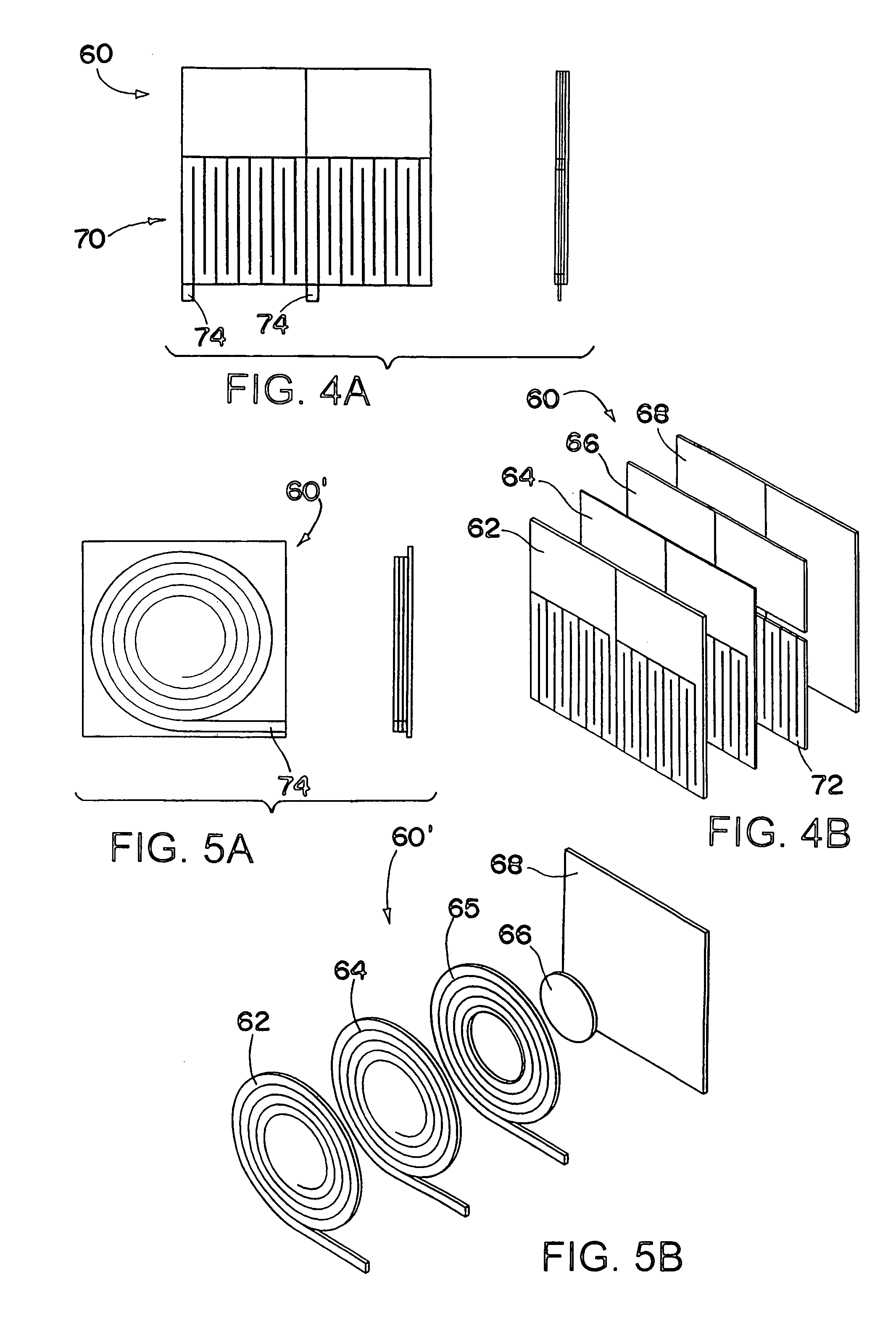Biomedical electrodes and biomedical electrodes for electrostimulation
a biomedical electrode and electrode technology, applied in the field of biomedical electrodes, can solve the problems of ineffective use of silver ink, inconvenient use of ink, and high cost of ink, and achieve the effects of high conformability, high conductive porous material, and high conductive conductivity
- Summary
- Abstract
- Description
- Claims
- Application Information
AI Technical Summary
Benefits of technology
Problems solved by technology
Method used
Image
Examples
Embodiment Construction
[0029]FIG. 1 illustrates an electrode 10 in accordance with an embodiment of the invention. The electrode 10 includes a first layer 12, which can be a polymer film (e.g., 5 mil PET) that operates as a release liner. The electrode 10 includes a second layer 14 in contact with the first layer 12. The second layer 14 can be a conductive gel layer, which can be purchased, for example, from Amgel Technologies, a division of Axelgaard Manufacturing, or from Procam Medical, part of Tyco International's subsidiary, Ludlow Corporation. The volume resistivity of the gel can be about 1500 ohm-cm, for example, and is available in a thickness of 35 mils.
[0030] The sheet resistivity of the gel (the second layer 14) can be determined by Equation 1, wherein W is the sheet width in centimeters, L is the sheet length in centimeters, ρ1 is the volume resistivity in ohm-cm, t is the thickness in centimeters, and ρ is the sheet resistivity in ohms / □. ρ=ρ1*Lt*WEquation 1
[0031] For example, a sheet ha...
PUM
 Login to View More
Login to View More Abstract
Description
Claims
Application Information
 Login to View More
Login to View More - R&D
- Intellectual Property
- Life Sciences
- Materials
- Tech Scout
- Unparalleled Data Quality
- Higher Quality Content
- 60% Fewer Hallucinations
Browse by: Latest US Patents, China's latest patents, Technical Efficacy Thesaurus, Application Domain, Technology Topic, Popular Technical Reports.
© 2025 PatSnap. All rights reserved.Legal|Privacy policy|Modern Slavery Act Transparency Statement|Sitemap|About US| Contact US: help@patsnap.com



